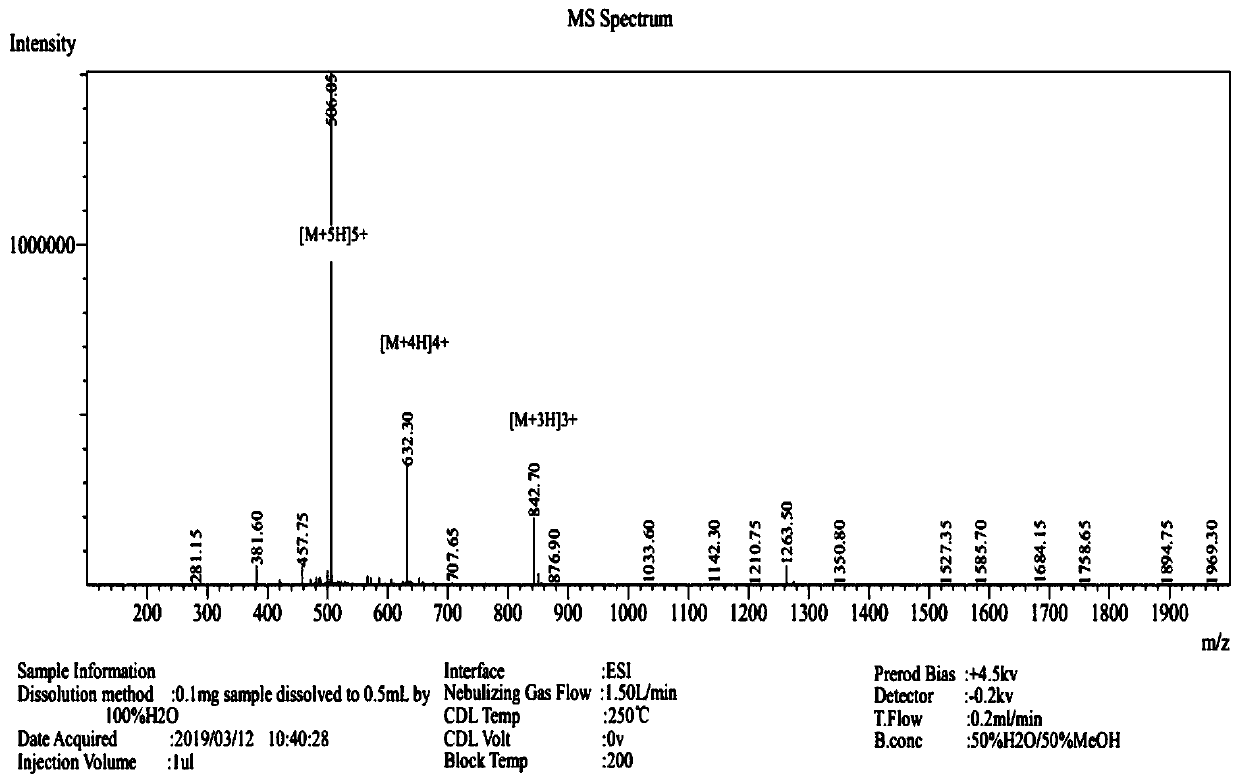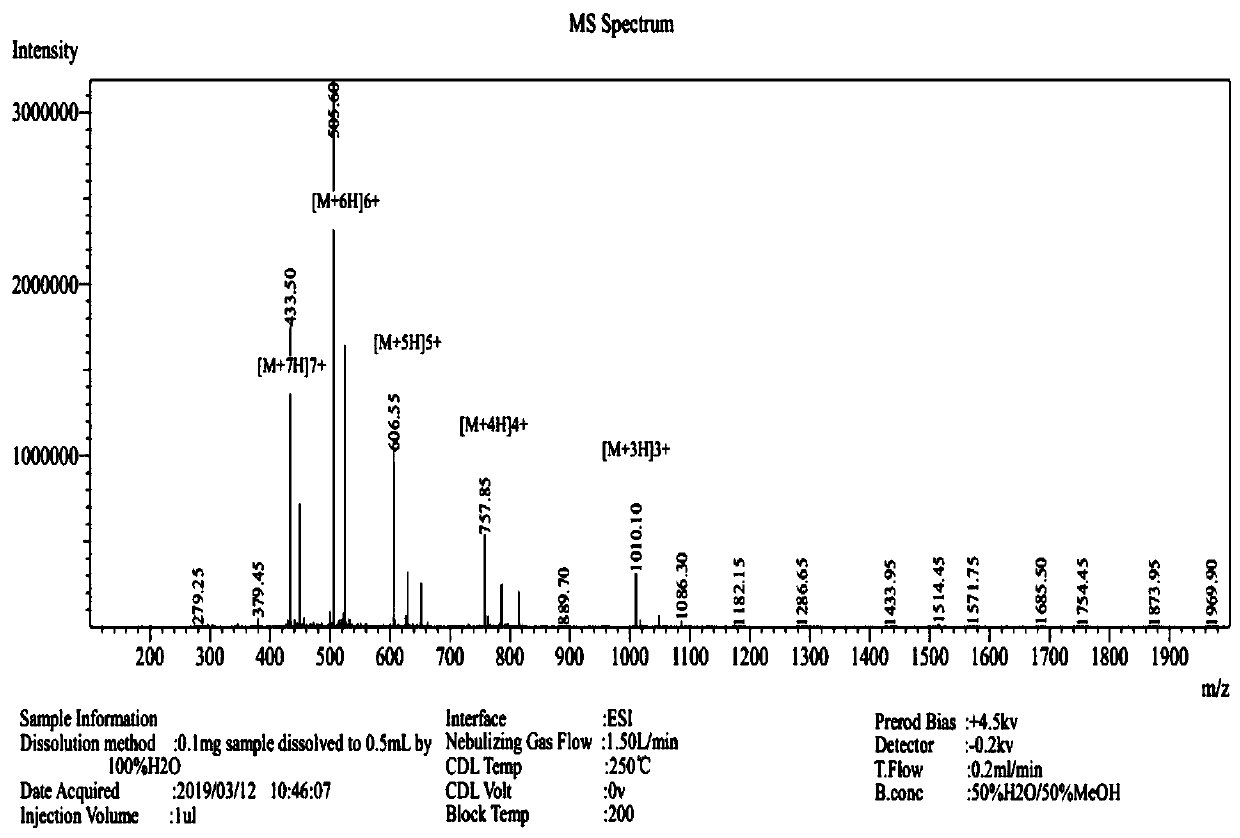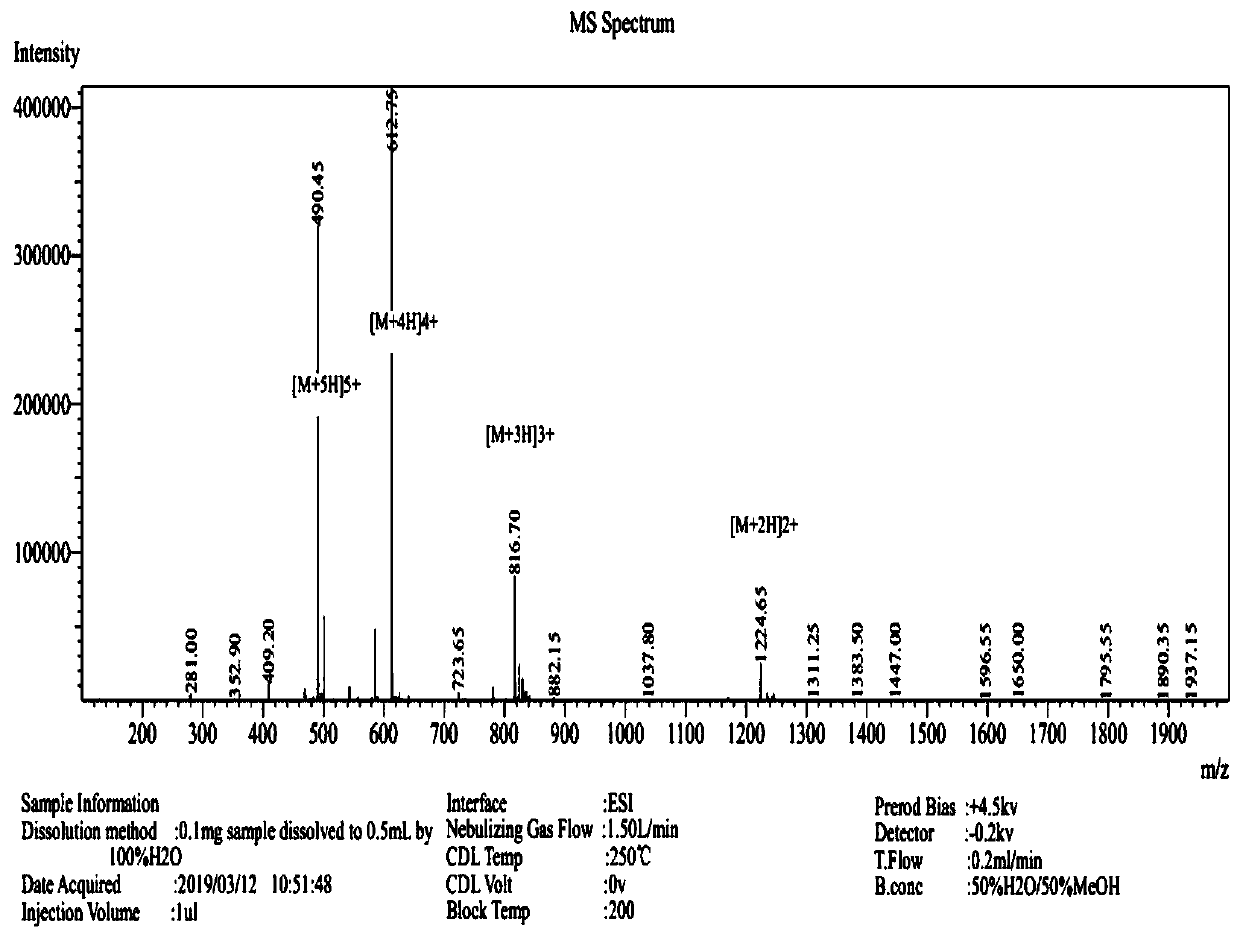Swine derived hybrid antimicrobial peptide MDP-2 and preparation method and application thereof
A technology of MDP-2 and hybrid antimicrobial peptides, which is applied in the direction of hybrid peptides, antibacterial drugs, fusion peptides, etc., can solve the problems of limited application, antibacterial activity and bacterial targeting ability
- Summary
- Abstract
- Description
- Claims
- Application Information
AI Technical Summary
Problems solved by technology
Method used
Image
Examples
Embodiment 1
[0017] Example 1: Design of pig-derived hybrid antimicrobial peptides
[0018] The complete amino acid sequences of porcine antimicrobial peptides PMAP-23 and PMAP-36 were obtained through NCBI. According to the amino acid composition and arrangement characteristics, PMAP-23 and PMAP-36 were truncated and amino acid replaced to obtain 4 peptide derivatives; The lipopolysaccharide-binding sequence FSKGKYKCV of D-like differentiation protein-2 was connected to each other to obtain four derived peptides MDP-1, MDP-2, MDP-3, MDP-4 ranging in length from 20 to 24 amino acids. As shown in Table 1.
[0019] Table 1 Amino acid sequence and molecular weight of pig-derived hybrid antimicrobial peptides
[0020]
Embodiment 2
[0021] Example 2: Synthesis of Design of Porcine-derived Hybrid Antimicrobial Peptides
[0022] The 4 polypeptides shown in Table 1 were synthesized using a peptide synthesizer, using solid-phase organic synthesis, using the Fmoc protection synthesis method, and the synthesis direction was carried out one by one from the C-terminal to the N-terminal. The specific steps are as follows:
[0023] (1) Select the Wang resin that has been connected to the first amino acid at the C-terminal, that is, Fmoc-A(trt)-Wang (9-fluorenylmethoxy-trimethyl-A, where A is the first amino acid at the C-terminal) , use dimethylformamide (DMF) to soak for about 15 minutes to remove impurities; use DMF containing 20% piperidine to remove the Fmoc protection on the resin, react for 20 minutes, and wash the resin until it is complete. The piperidine was washed away with DMF, and the remaining solid suspension was the deprotected A-Wang. The quality of A-Wang deprotection was checked with ptrintrion...
Embodiment 3
[0027] Example 3: Antibacterial Activity Determination of Porcine-derived Hybrid Antimicrobial Peptides
[0028] Using the method for determining the minimum inhibitory concentration (MIC) recommended by the American Clinical Laboratory Standardization Institute (CLSI), and aiming at the cationic characteristics of antimicrobial peptides, 0.01% acetic acid (containing 0.2% BSA) was used as the polypeptide diluent. A series of gradient antimicrobial peptide solutions were sequentially prepared by the double dilution method. Specific steps are as follows:
[0029] (1) Preparation of bacteria: take the bacteria to be tested frozen at -20°C, streak inoculate them in MH(A) medium and incubate them. A single colony was picked, inoculated in 10 mL of MH(B) medium, and cultured overnight at 37°C and 200 rpm. Then inoculate the overnight bacteria in fresh culture medium and culture for 1-2 hours until the bacteria are in the logarithmic growth phase, making their OD 600 =0.4, adjust...
PUM
 Login to View More
Login to View More Abstract
Description
Claims
Application Information
 Login to View More
Login to View More - R&D
- Intellectual Property
- Life Sciences
- Materials
- Tech Scout
- Unparalleled Data Quality
- Higher Quality Content
- 60% Fewer Hallucinations
Browse by: Latest US Patents, China's latest patents, Technical Efficacy Thesaurus, Application Domain, Technology Topic, Popular Technical Reports.
© 2025 PatSnap. All rights reserved.Legal|Privacy policy|Modern Slavery Act Transparency Statement|Sitemap|About US| Contact US: help@patsnap.com



